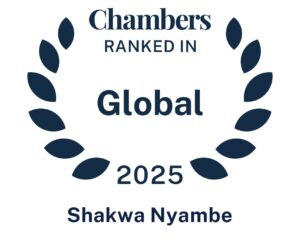In a world accelerating toward decarbonisation and autonomy, Namibia has a unique card to play: uranium. Not in the usual sense, where we extract, export, and applaud the transactional benefit. That model has run its course. The next phase demands something different. It requires strategic imagination. Repositioning uranium not merely as a commodity, but as the foundation for a new kind of value, a sovereign nuclear energy initiative grounded in legal innovation and thoughtful regulation, which thus creates a forward-looking investor climate.
Rather than reciting the many benefits of nuclear power, which are well documented, the purpose here invites a different sort of conversation. What if Namibia could build a nuclear future that is leaner, smarter, and more adaptive than the traditional state driven megaprojects we’ve come to expect? What legal pathways might make that possible? Which policy choices might feel unconventional now but become standard later?
Laying the Groundwork: Legal Architecture in Motion
Fast forward to 2025, and Namibia is no longer dabbling with the nuclear question. It is engaging with it deliberately. The country has begun to sculpt the first legal outlines of what its nuclear-powered tomorrow might look like.
This year, the Cabinet endorsed Namibia’s first Nuclear Industry Strategy, a living policy compass that places law and institutional readiness at the center of its vision. And with it, amendments to the Atomic Energy and Radiation Protection Act of 2005 are underway, aiming to widen the regulatory lens beyond radiological safety to accommodate the full scope of nuclear infrastructure. A particularly positive step came on 23 September 2025, when Cabinet formally approved the amendment process for the Act, further cementing government commitment to building the legal and regulatory foundations required for a future nuclear energy industry.
But perhaps the most telling shift is administrative: the reins of nuclear policy are moving to the National Planning Commission. This is not bureaucratic shuffling. It signals that Namibia sees nuclear development not as a siloed utility project, but as an instrument of national transformation spanning energy, industry, and education.
Part of this evolution includes establishing a Nuclear Institute of Namibia, which would serve not as a regulatory body, but as a knowledge engine and facilitator for pilot projects, technical studies, and public engagement. This dualism, a robust regulator alongside a dynamic implementer, could become a signature feature of Namibia’s nuclear governance model.
Legal scaffolding is also being designed to flex with ambition. Lawmakers are exploring how Namibia’s regulatory frameworks might adapt to emerging technologies like Small Modular Reactors (SMRs), or how a licensing regime might account for non-electric applications such as desalination or hydrogen production. In this context, law is no longer just a constraint, but a tool of orchestration.
Public private partnership structures are also under the microscope. With a possible price tag that makes sovereign financing alone implausible, Namibia is exploring legal mechanisms to de risk nuclear ventures for private investors while preserving sovereign oversight. This could include bespoke PPP codes, long term licensing protocols, and dispute resolution frameworks tailored to multi decade projects.
Notably, international collaboration remains central. Namibia is aligning with IAEA recommendations and moving toward deeper engagement with nuclear safety conventions and export control regimes. In time, the legal readiness to join frameworks like the Nuclear Suppliers Group may not just enhance credibility, but position Namibia as a rule maker, not just a rule taker.
A key moment in this narrative came when President Netumbo Nandi Ndaitwah announced in her 2025 State of the Nation Address that Namibia would initiate formal discussions on building its first nuclear power plant. Her statement was more than aspirational; it was a signal that Namibia intends to integrate nuclear energy into its broader development vision. “We must harness our natural endowments not only for export, but to ensure our own long term energy security,” she declared.
Among Namibia’s early strategic partnerships, the government has turned to Russia’s Rosatom as a potential cornerstone partner. Talks are underway to explore cooperation in reactor development, technology transfer, and even training for Namibian professionals. If realized, this partnership could blend Namibia’s regulatory foresight with Russia’s technical depth, helping Namibia leapfrog into a new energy era.
Ensuring energy security is more than a policy objective. It is foundational for sustainable development. Without a reliable, stable, and scalable power base, the promise of industrialisation, job creation, and digital transformation remains just that: a promise. Nuclear energy, carefully deployed and legally grounded, could anchor Namibia’s transition from energy dependency to energy leadership.
Global Models: Adapting, Not Adopting
Namibia does not need to reinvent the nuclear wheel, but it can certainly reshape its spokes. Around the world, diverse models are showing what nuclear development looks like when it is matched with clear legal vision.
The UAE’s Barakah project, for example, was not simply about engineering prowess. It succeeded because of decisive legislation, early and sustained IAEA involvement, and a centralised licensing authority that reduced bureaucratic friction. Namibia might draw from this model by streamlining licensing and integrating international safety reviews early in the project cycle.
Finland’s success, on the other hand, rests on social license. It achieved buy in through radical transparency, consistent public engagement, and revenue sharing arrangements with host communities. In Namibia, where public trust in extractive industries has often been tested, this offers a useful lesson: legal frameworks for nuclear infrastructure must also embed public participation mechanisms that are more than symbolic.
Canada provides another instructive approach. Ontario’s strategic pairing of SMRs with industrial zones has reimagined nuclear not as an isolated power source but as an enabler of high value manufacturing, including clean hydrogen and ammonia. For Namibia, with its green hydrogen ambitions, the legal capacity to co locate nuclear and industrial infrastructure could be transformative.
From each of these examples, a blueprint emerges: tight policy coordination, adaptive legislation, and societal inclusion. It is not about following but translating. Namibia can draw selectively and create a legal ecosystem that fits its unique geography, governance, and aspirations.
Conclusion: An Invitation Renewed
Namibia is not chasing nuclear for nostalgia or prestige. It is mapping a possibility that a small, stable democracy rich in uranium can build a nuclear model that is modular, transparent, and democratically accountable. In 2025, that map is becoming more detailed.
This is not the story of a megaproject breaking ground. It is the quieter but no less radical work of laying the legal foundations. The way Namibia designs its laws, institutions, and partnerships now will shape not just how nuclear power arrives, but what kind of future it builds once it does.
The invitation still stands, to imagine boldly. But now, with pen to paper, Namibia is beginning to write that future into law.
The future isn’t dictated. But it is designed. And Namibia is well within its rights to begin designing boldly.





